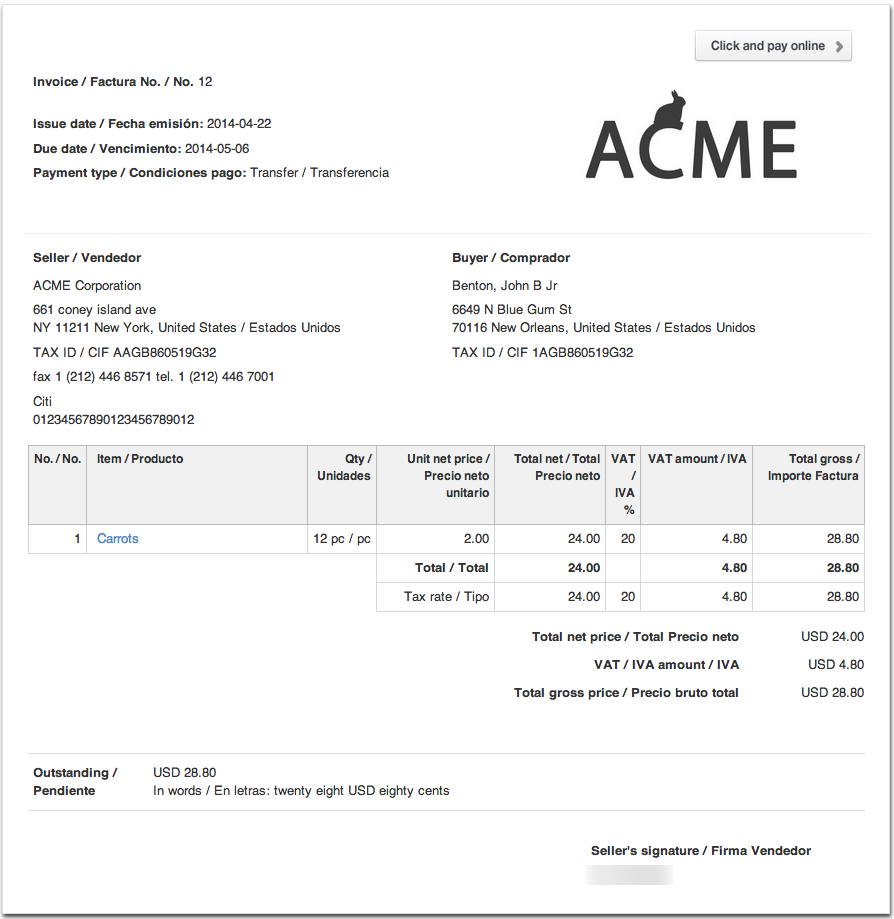How to understand Spanish Invoices

Companies need to store invoices and extract data from invoices to maintain tax records and spends for their accounting purposes. Companies with international operation need to deal with complex VAT/Tax rules in different regions for local tax filing. An invoice is a proof of the transaction with registered name of the entity, invoice number and Tax ID. In this blog we discuss the meaning of the various terms you see in a normal Spanish invoice and how Nanonets OCR can help with its invoice processing software.
Need to extract information from Spanish invoices? Head over to Nanonets and automate extraction of information from invoices in Spanish!
Laws for managing invoices in Spain
All companies are required to store a copy of each invoice and maintain their details in their books for audit purposes for all business-related expenses. The huge number of invoices a company receives and the requirement to submit it's details and file taxes each month (some industries require submission in 4 days) to the Agencia Tributaria gives very little time to extract information from these invoices.
Current template-based solutions don't help these companies as invoices don't follow any template. Invoice number in spanish invoices for example can come anywhere with different labels like “Número”, “Número de factura”, “Factura nº”, “nº Factura” or just “Factura”. To handle such diverse cases you need an intelligent software which "understands" these variances.
Standards for Spanish invoices
An invoice in the Spanish language is called "Factura" so the invoice, just like in the US must contain the word "Factura". Details of seller, buyer, items sold/purchased and the VAT are essential.
Here's a quick sheet sheet of some the more common terms that you'll see in any Spanish invoice:
Invoice Info:
'Nfamero_factura' “Número”, “Número de factura”, “Factura nº”, “nº Factura” or just “Factura” – Invoice number
'Fecha_factura' , "Fecha"– Invoice Date
'Total' – Total amount (vat included)
Buyer Info
'Comprador' – Buyers name
'CIF_comprador' – Buyers VAT
'Direccin_comprador' – Buyers address
Seller Info:
'Vendedor' – Sellers name
'CIF_vendedor' – Sellers VAT
'Direccin_vendedor' – Sellers address
Tax Info:
'Base_imponible' – Amount Before Taxes
'IRPF' – Withholding tax
'IVA' - VAT
Misc Info:
'Fecha_vencimiento' – Due Date
'IBAN' – International Bank Account Number
Invoice date should be in very invoice (look at the images below). Some labels like Invoice_Date, Total_Amount, Invoice_number, etc. should be in every invoice. For example, “fra.” stands for “inv.” (short for invoice), so “fecha de fra.simp” is invoice date.

How Nanonets can help you
Nanonets is an artificial intelligence based OCR engine that helps business across the world automate accounting process that require manual extraction. Our AP Automation software makes monthly invoice processing a hassle-free process. Using invoice capture API you can cut down upto 90% of manual tasks of data entry into your accounting softwares. We are a valued partner of over 20,000 businesses in 4 continents.



